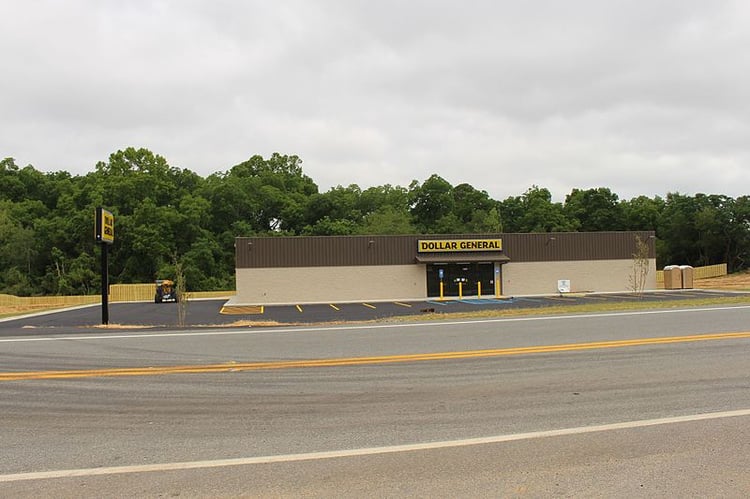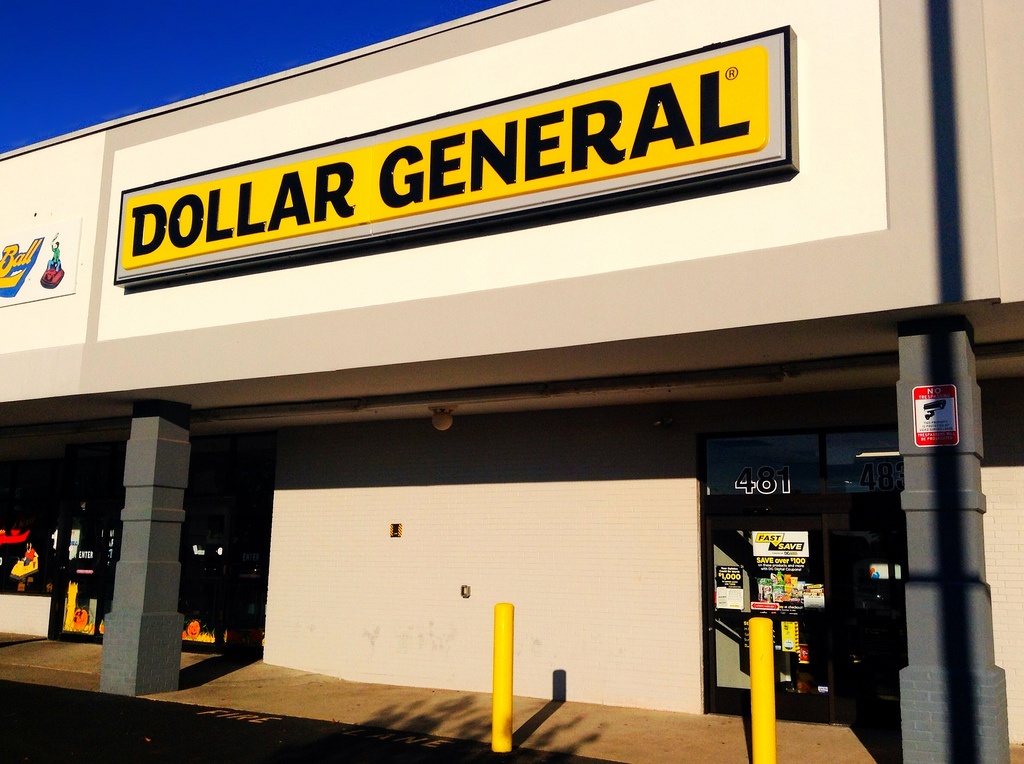To bastardize Dolly Parton, you can make a lot of money selling things for cheap. Dollar General, the grocery and home goods discounter, has been on quite the run over the past decade or so: their stock price has quadrupled since 2009 and they have exceeded earning estimates 4 consecutive quarters—over which time their stock price has increased more than 35%. Last year they pulled in $5.9 billion in revenue, an 11% increase, with a 4.6% increase in same store sales. And all this amidst what is supposed to be an impending retail apocalypse.
As Morningstar pointed out, “Dollar General has carved out a niche in the intensely competitive retail landscape by offering easy-to-navigate stores that cater to value-conscious low- and fixed-income consumers.”
It is quite the niche. So let’s follow the retail and grocery industry market research and investigate this baron of bargains, this champion of the cheap.
Explanations and Expansions
So, how, amidst warnings of an impending apocalypse and in a vertical stacked to the sky with competition, has Dollar General gone on such a hot streak? By keeping prices competitive, that’s how.
Indeed, Retail Metrics analyst Ken Perkins traces the discount giant's growth to the shrinking middle class: "Dollar stores’ core customers are lower-income consumers, which have been unfortunately growing." Indeed, Pew found in 2015 that only 50% of the nation fit into the economic boundaries of the middle class--that number is down from 61% in the 1970s. And it's not because they are getting wealthier. According to Perkins, the middle class has decreased in 209 of 230 national metropolitan areas.
And for the majority of these consumers, it all comes down to convenience and cost: “It’s really convenient, and with prices rising everywhere, it’s nice to go to a place that I can actually afford for the things I want,” said one Philadelphia area customer. “It’s cheap and easy,” said another. “The prices are very good and it has everything.”
According to Perkins, “They sell low-cost goods typically in smaller sizes and packages to keep costs lower than bulk products sold in grocers, discounters, and warehouse clubs.” This not only makes them a popular mid-week fill in choice for shoppers looking to grab a few quick items—their average basket size is $12 and 5 items—their ubiquity in rural areas has in fact made them the de facto grocer for many.
And they are expanding. Big time. They plan to add 900 stores in 2018, roughly the same amount they added in 2017. According to their CFO John Garrat, "Our first priority remains investing in new stores where we continue to see great returns." Many of these will be built into former Family Dollar stores and Walmart Expresses, both of which Dollar General has been buying up like roadside produce.
These stores will add to the 14,000 existing dollar generals, and they plan to increase by 35% over the next five years to get to a cool 25,000 storefronts. Either way, by the end of the year, 3 out of every 4 Americans will live within miles of a Dollar General.
This says nothing of the roughly 1,000 stores that will be remodeled, and the 100 that will be relocated over the next year, and that last bit, the one about relocating 100 stores, is a great way to start talking about their biggest competitive advantage.
The Relative Affordability of Opening and Closing
The cost of opening a Dollar General is, appropriately, relatively cheap at about $250,000 owing to its small location and no-frills ethos. Combine that with the fact that they only have between four and six employees clocked in at any given time, and you start to see how the Dollar General has lowered the threshold for profitability. Their stores begin to turn a profit far sooner than other retailers, usually in about two years.
That is, without a doubt their greatest competitive advantage. Since they have a lower profitability bar to clear, they can open stores in rural locations that competitors simply cannot. In fact, 70% of their locations are in towns with less than 20,000 people.
Moreover, they can follow the low-income money, so to speak. Because their stores become profitable so quickly, they can afford to retreat from locations with declining purchasing power in pursuit of those where it is expanding. Similarly, they can slip out the back (jack) if Walmart shows up across the street and simply move on to the next location. Those 100 stores they are relocating—all they are doing is picking up and setting up shop elsewhere: same employees, same strategy, new destination.
And often this location is somewhere it is not feasible for Walmart to extend.

Internal Improvements
Oh and look out, they are moving into private label. They have already taken REXALL brands—a private label OTC medication brand licensed from McKesson—from 0 to $200 million, not only turning profits but demonstrating a clear blueprint for how to develop other private label offerings within their stores. By being the most affordable items in a discount store full of bargain-conscious consumers, Dollar General private label food and household goods could come to dominate discount shopping.
Many of their other improvements have echoed previous efforts by Walmart. They are planning to expand into produce, particularly in communities where they represent the only grocery options, and are also building more coolers into their store to more aggressively attack the perishable goods market.
Also like Walmart’s far more publicized efforts, they too are investing in employee pay and training to reduce turnover and ultimately allow locations to function with less employees on the floor. And like any retailer in the game, they are working hard at better price management, new merchandising initiatives, and cost-containment efforts.
Competitive Pricing Analysis: General among Four Rising Stars
But Dollar General may not be the commander of the low-income grocery market for long. Similarly small-scale stores such as Aldi and Lidl are invading America, combining Dollar General’s model with some good ol’ German efficiency. Having already undercut the competition in Europe, these two brands will be looking to attract middle-class consumers to their no-frills, bargain-basement-priced stores.
And that says nothing of Amazon/Whole Foods. Who knows what will become of grocery margins and price points once Bezos gets this thing going.
One thing that will be central to their strategy going forward: competitive pricing audits. Dollar General must ensure that it maintains its margins while also being the lowest cost shop. They must maintain their profitability while also ensuring their profits don’t cut into their reputation as the best deal in every one-horse town.
Obviously, this involves pricing the competition with some competitive market research. Deploying Field Agents to competitors’ locations to systematically scout out the pricing isn’t spying, it’s just good business.
Grocery Industry Market Research: The Coming Robot Revolution
One final thing to consider: as delivery becomes the retail and grocery standard, Dollar General has set themselves up for the digital delivery revolution. Consider their real estate portfolio—they have a toehold in rural communities across the country, places Amazon and Walmart are nowhere near. Dollar General has already figured out how to get goods to these locations in a cost-effective manner and each brick-and-mortar location is a distribution center in disguise. If and when rural customers start expecting grocery delivery like the rest of the country soon will, Dollar General is ahead of the game in terms of its network.
Of course, drones, robots, and other machines will one day soon change delivery entirely. But these tools will not change the physical landscape overnight. Though it operates at low-fi, Dollar General is prepared for the high-tech era.


